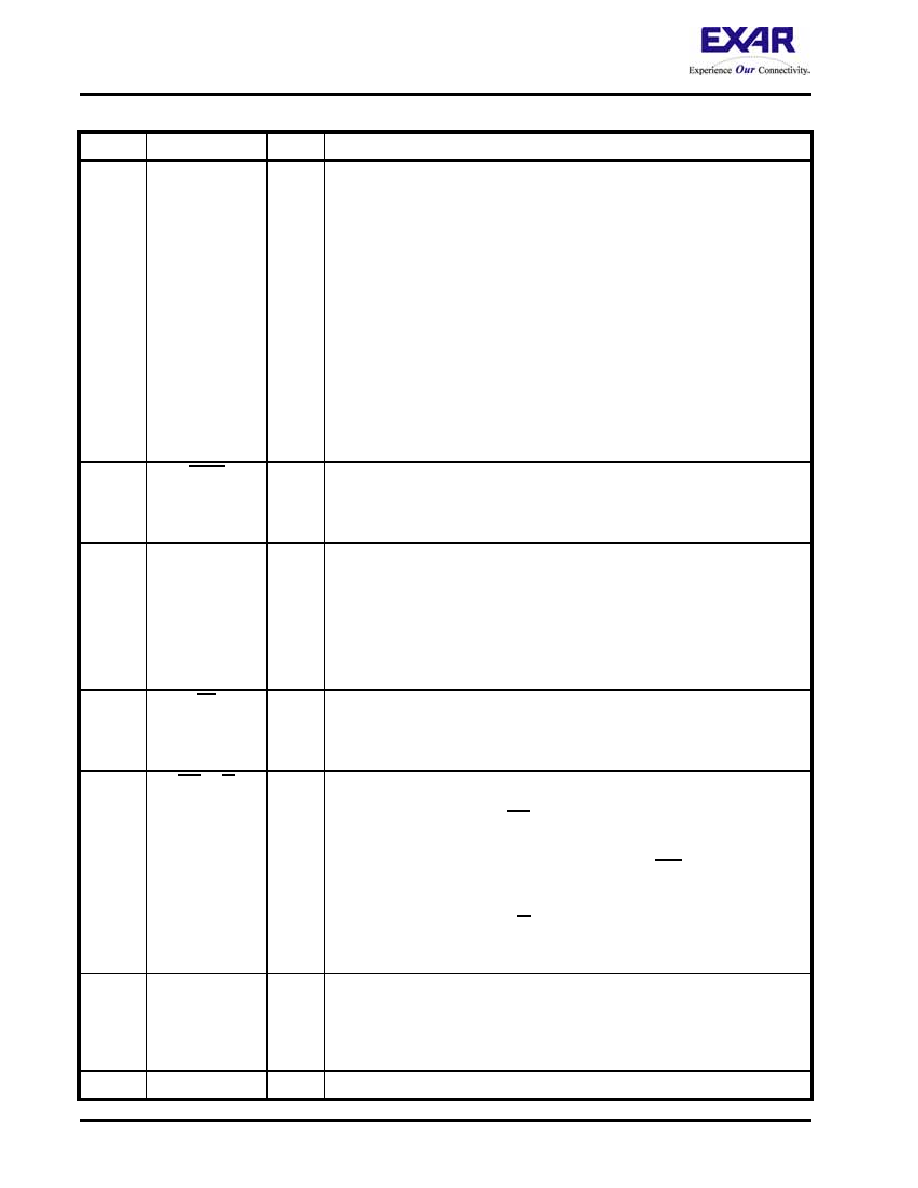- 您現(xiàn)在的位置:買賣IC網(wǎng) > PDF目錄11554 > XRT72L52IQ-F (Exar Corporation)IC FRAMER DS3/E3 2CH 160QFP PDF資料下載
參數(shù)資料
| 型號: | XRT72L52IQ-F |
| 廠商: | Exar Corporation |
| 文件頁數(shù): | 179/488頁 |
| 文件大小: | 0K |
| 描述: | IC FRAMER DS3/E3 2CH 160QFP |
| 產(chǎn)品變化通告: | XRT72Lx Series Obsolescence 02/May/2012 |
| 標準包裝: | 24 |
| 控制器類型: | DS3/E3 調(diào)幀器 |
| 電源電壓: | 3.3V |
| 電流 - 電源: | 100mA |
| 工作溫度: | -40°C ~ 85°C |
| 安裝類型: | 表面貼裝 |
| 封裝/外殼: | 160-BQFP |
| 供應商設(shè)備封裝: | 160-PQFP(28x28) |
| 包裝: | 托盤 |
| 其它名稱: | 1016-1636 XRT72L52IQ-F-ND |
第1頁第2頁第3頁第4頁第5頁第6頁第7頁第8頁第9頁第10頁第11頁第12頁第13頁第14頁第15頁第16頁第17頁第18頁第19頁第20頁第21頁第22頁第23頁第24頁第25頁第26頁第27頁第28頁第29頁第30頁第31頁第32頁第33頁第34頁第35頁第36頁第37頁第38頁第39頁第40頁第41頁第42頁第43頁第44頁第45頁第46頁第47頁第48頁第49頁第50頁第51頁第52頁第53頁第54頁第55頁第56頁第57頁第58頁第59頁第60頁第61頁第62頁第63頁第64頁第65頁第66頁第67頁第68頁第69頁第70頁第71頁第72頁第73頁第74頁第75頁第76頁第77頁第78頁第79頁第80頁第81頁第82頁第83頁第84頁第85頁第86頁第87頁第88頁第89頁第90頁第91頁第92頁第93頁第94頁第95頁第96頁第97頁第98頁第99頁第100頁第101頁第102頁第103頁第104頁第105頁第106頁第107頁第108頁第109頁第110頁第111頁第112頁第113頁第114頁第115頁第116頁第117頁第118頁第119頁第120頁第121頁第122頁第123頁第124頁第125頁第126頁第127頁第128頁第129頁第130頁第131頁第132頁第133頁第134頁第135頁第136頁第137頁第138頁第139頁第140頁第141頁第142頁第143頁第144頁第145頁第146頁第147頁第148頁第149頁第150頁第151頁第152頁第153頁第154頁第155頁第156頁第157頁第158頁第159頁第160頁第161頁第162頁第163頁第164頁第165頁第166頁第167頁第168頁第169頁第170頁第171頁第172頁第173頁第174頁第175頁第176頁第177頁第178頁當前第179頁第180頁第181頁第182頁第183頁第184頁第185頁第186頁第187頁第188頁第189頁第190頁第191頁第192頁第193頁第194頁第195頁第196頁第197頁第198頁第199頁第200頁第201頁第202頁第203頁第204頁第205頁第206頁第207頁第208頁第209頁第210頁第211頁第212頁第213頁第214頁第215頁第216頁第217頁第218頁第219頁第220頁第221頁第222頁第223頁第224頁第225頁第226頁第227頁第228頁第229頁第230頁第231頁第232頁第233頁第234頁第235頁第236頁第237頁第238頁第239頁第240頁第241頁第242頁第243頁第244頁第245頁第246頁第247頁第248頁第249頁第250頁第251頁第252頁第253頁第254頁第255頁第256頁第257頁第258頁第259頁第260頁第261頁第262頁第263頁第264頁第265頁第266頁第267頁第268頁第269頁第270頁第271頁第272頁第273頁第274頁第275頁第276頁第277頁第278頁第279頁第280頁第281頁第282頁第283頁第284頁第285頁第286頁第287頁第288頁第289頁第290頁第291頁第292頁第293頁第294頁第295頁第296頁第297頁第298頁第299頁第300頁第301頁第302頁第303頁第304頁第305頁第306頁第307頁第308頁第309頁第310頁第311頁第312頁第313頁第314頁第315頁第316頁第317頁第318頁第319頁第320頁第321頁第322頁第323頁第324頁第325頁第326頁第327頁第328頁第329頁第330頁第331頁第332頁第333頁第334頁第335頁第336頁第337頁第338頁第339頁第340頁第341頁第342頁第343頁第344頁第345頁第346頁第347頁第348頁第349頁第350頁第351頁第352頁第353頁第354頁第355頁第356頁第357頁第358頁第359頁第360頁第361頁第362頁第363頁第364頁第365頁第366頁第367頁第368頁第369頁第370頁第371頁第372頁第373頁第374頁第375頁第376頁第377頁第378頁第379頁第380頁第381頁第382頁第383頁第384頁第385頁第386頁第387頁第388頁第389頁第390頁第391頁第392頁第393頁第394頁第395頁第396頁第397頁第398頁第399頁第400頁第401頁第402頁第403頁第404頁第405頁第406頁第407頁第408頁第409頁第410頁第411頁第412頁第413頁第414頁第415頁第416頁第417頁第418頁第419頁第420頁第421頁第422頁第423頁第424頁第425頁第426頁第427頁第428頁第429頁第430頁第431頁第432頁第433頁第434頁第435頁第436頁第437頁第438頁第439頁第440頁第441頁第442頁第443頁第444頁第445頁第446頁第447頁第448頁第449頁第450頁第451頁第452頁第453頁第454頁第455頁第456頁第457頁第458頁第459頁第460頁第461頁第462頁第463頁第464頁第465頁第466頁第467頁第468頁第469頁第470頁第471頁第472頁第473頁第474頁第475頁第476頁第477頁第478頁第479頁第480頁第481頁第482頁第483頁第484頁第485頁第486頁第487頁第488頁

XRT72L52
10
TWO CHANNEL DS3/E3 FRAMER IC WITH HDLC CONTROLLER
REV. 1.0.3
87
NibbleIntf
I
Nibble Interface Select Input Pin:
This input pin allows the user to configure the Transmit Payload Data Input Inter-
face and the Receive Payload Data Output Interface to operate in either the
Serial-Mode or the Nibble/Parallel-Mode.
Setting this input pin "High" configures the Transmit and Receive Terminal Inter-
faces to operate in the Nibble/Parallel-Mode. In this mode, the Transmit Payload
Data Input Interface block accepts the outbound payload data from the Terminal
Equipment in a nibble-parallel manner via the TxNib[3:0] input pins. Further, the
Receive Payload Data Output Interface block outputs the inbound payload data
to the Terminal Equipment in a nibble-parallel manner via the RxNib[3:0] output
pin.
Setting this input pin "Low" configures the Transmit and Receive Terminal Inter-
faces to operate in the Serial Mode. In this mode, the Transmit Payload Data
Input Interface block accepts the outbound payload data from the Terminal
Equipment in a serial manner via the TxSer input pin. Further, the Receive Pay-
load Data Output Interface block outputs the inbound payload data to the Termi-
nal Equipment in a serial manner via the RxSer output pin.
88
Reset
I
Reset Input:
When this active-low signal is asserted, the Framer is asynchronously reset.
Additionally, all outputs are tri-stated and all on-chip registers are reset to their
default values.
89
MOTO
I
Motorola/Intel Processor Interface Select Mode:
This input pin allows the user to configure the Microprocessor Interface to inter-
face with either a Motorola-type or Intel-type microprocessor/microcontroller.
Tying this input pin to VCC configures the microprocessor interface to operate in
the Motorola mode (e.g., the Framer can be readily interfaced to a Motorola type
local microprocessor). Tying this input pin to GND configures the Microproces-
sor Interface to operate in the Intel Mode (e.g., the Framer can be readily inter-
faced to a Intel type local microprocessor).
90
CS
I
Chip Select Input:
This active-low input signal selects the Microprocessor Interface Section of the
Framer and enables READ/WRITE operations between the Local Microproces-
sor and the Framer on-chip registers and RAM locations.
91
WR_R/W
I
Write Data Strobe (Intel Mode):
If the microprocessor interface is operating in the Intel Mode, then this active-
low input pin functions as the WR (Write Strobe) input signal from the P. Once
this active-low signal is asserted, then the Framer latches the contents of the P
Data Bus into the addressed register or RAM location within the Framer IC. In
the Intel Mode, data gets latched on the rising edge of WR.
R/W Input Pin (Motorola Mode):
When the Microprocessor Interface is operating in the Motorola Mode, this pin is
functionally equivalent to the R/W pin. In the Motorola Mode, a READ operation
occurs if this pin is at a logic "1". A WRITE operation occurs if this pin is at a
logic "0".
92
ALE_AS
I
Address Latch Enable/Address Strobe:
This input is used to latch the address present at the Microprocessor Interface
Address Bus, A(9:0), into the Framer Microprocessor Interface circuitry and to
indicate the start of a READ/WRITE cycle. This input is active-high in the Intel
Mode (MOTO = "Low") and active-low in the Motorola Mode (MOTO = "High").
93
NC
PIN DESCRIPTION
PIN #PIN NAME
TYPE
DESCRIPTION
相關(guān)PDF資料 |
PDF描述 |
|---|---|
| VI-241-IX-S | CONVERTER MOD DC/DC 12V 75W |
| VI-21Z-IV-S | CONVERTER MOD DC/DC 2V 60W |
| VI-21Y-IV-S | CONVERTER MOD DC/DC 3.3V 99W |
| VI-20W-IX-S | CONVERTER MOD DC/DC 5.5V 75W |
| VE-2VJ-IX-S | CONVERTER MOD DC/DC 36V 75W |
相關(guān)代理商/技術(shù)參數(shù) |
參數(shù)描述 |
|---|---|
| XRT72L52IQTR-F | 功能描述:網(wǎng)絡(luò)控制器與處理器 IC RoHS:否 制造商:Micrel 產(chǎn)品:Controller Area Network (CAN) 收發(fā)器數(shù)量: 數(shù)據(jù)速率: 電源電流(最大值):595 mA 最大工作溫度:+ 85 C 安裝風格:SMD/SMT 封裝 / 箱體:PBGA-400 封裝:Tray |
| XRT72L53 | 制造商:EXAR 制造商全稱:EXAR 功能描述:THREE CHANNEL DS3/E3 FRAMER IC WITH HDLC CONTROLLER |
| XRT72L53-75L03DPC | 功能描述:網(wǎng)絡(luò)控制器與處理器 IC with T75L03D. RoHS:否 制造商:Micrel 產(chǎn)品:Controller Area Network (CAN) 收發(fā)器數(shù)量: 數(shù)據(jù)速率: 電源電流(最大值):595 mA 最大工作溫度:+ 85 C 安裝風格:SMD/SMT 封裝 / 箱體:PBGA-400 封裝:Tray |
| XRT72L53-75L03PCI | 功能描述:網(wǎng)絡(luò)控制器與處理器 IC with T75L03. RoHS:否 制造商:Micrel 產(chǎn)品:Controller Area Network (CAN) 收發(fā)器數(shù)量: 數(shù)據(jù)速率: 電源電流(最大值):595 mA 最大工作溫度:+ 85 C 安裝風格:SMD/SMT 封裝 / 箱體:PBGA-400 封裝:Tray |
| XRT72L53ES-75L03D-PCI | 功能描述:界面開發(fā)工具 Evaluation Board for XRT72L53 Series RoHS:否 制造商:Bourns 產(chǎn)品:Evaluation Boards 類型:RS-485 工具用于評估:ADM3485E 接口類型:RS-485 工作電源電壓:3.3 V |
發(fā)布緊急采購,3分鐘左右您將得到回復。